If you want the most perfectly moist, flavorful, and juicy Thanksgiving Turkey, my dry brine turkey recipe is what you’re looking for. All you need to do is rub the turkey down with salt, seasonings, and fresh herbs. Then, place the turkey in the fridge and let the dry brine work its magic for the next 48 to 72 hours.
That’s all you need the prep you need to do, and you’re on your way to enjoying the best turkey you’ll ever eat!
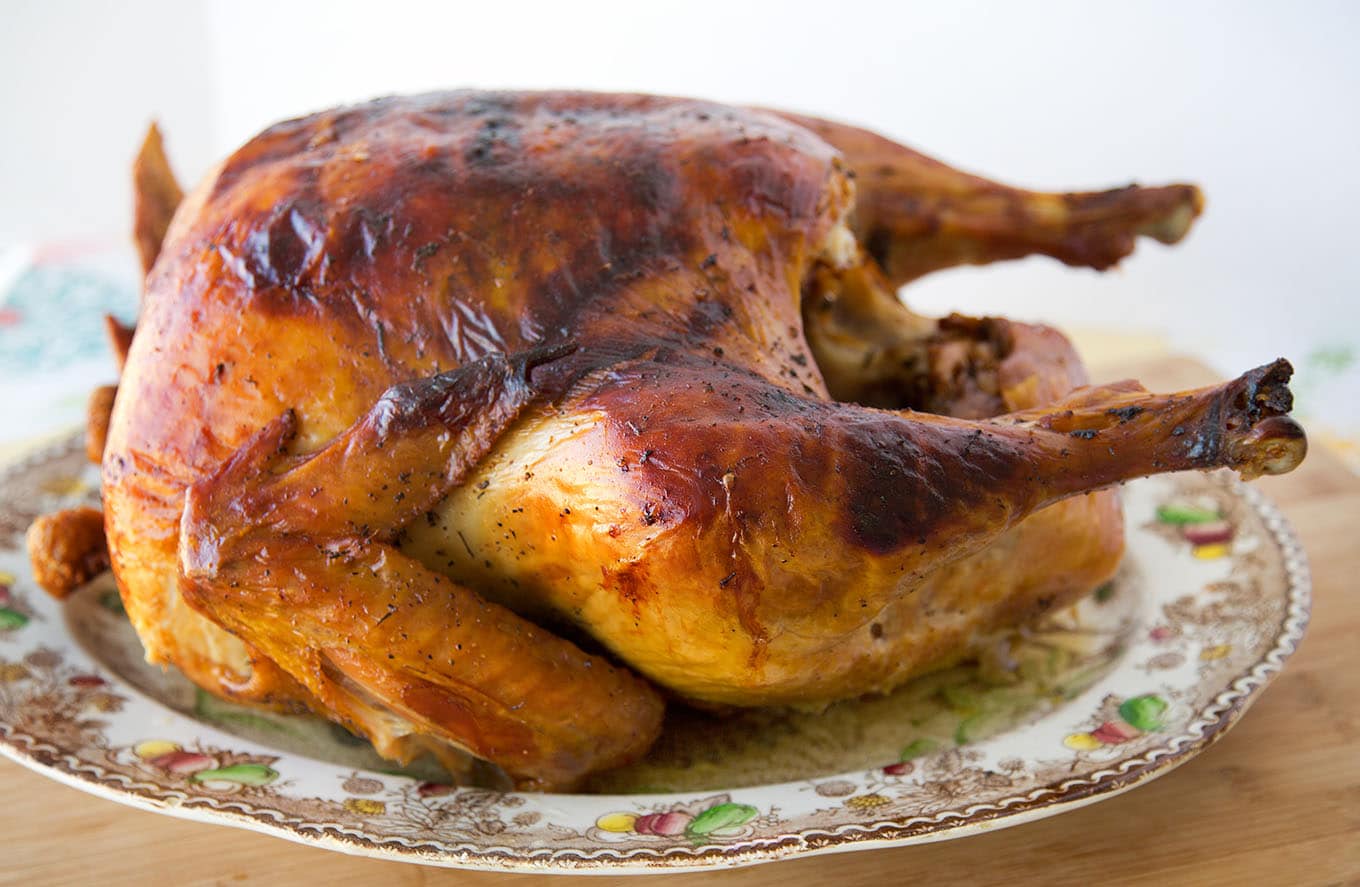
Audio Player
When it comes to cooking a turkey, what you do before it goes into your oven makes all the difference in the world.
Don’t be intimidated by the thought of cooking a turkey. Because I’m here to share my dry brining and roasting methods to make your holiday turkey the star of the holiday dinner
There are different thoughts on brining a turkey, with the choices being wet brine or dry brining. While both techniques will help you cook the most succulent turkey you’ve ever had, the smartest, easiest way to achieve the best results every time is with a dry brine.
It doesn’t matter if this is your first Thanksgiving dinner, my dry-brine method will make you look like a seasoned veteran of Thanksgiving and turn out an impeccably juicy, flavorful bird.
If you’re looking for a non-traditional dessert for the holidays, my Tiramisu will be the perfect ending to your holiday meal.
Ingredients
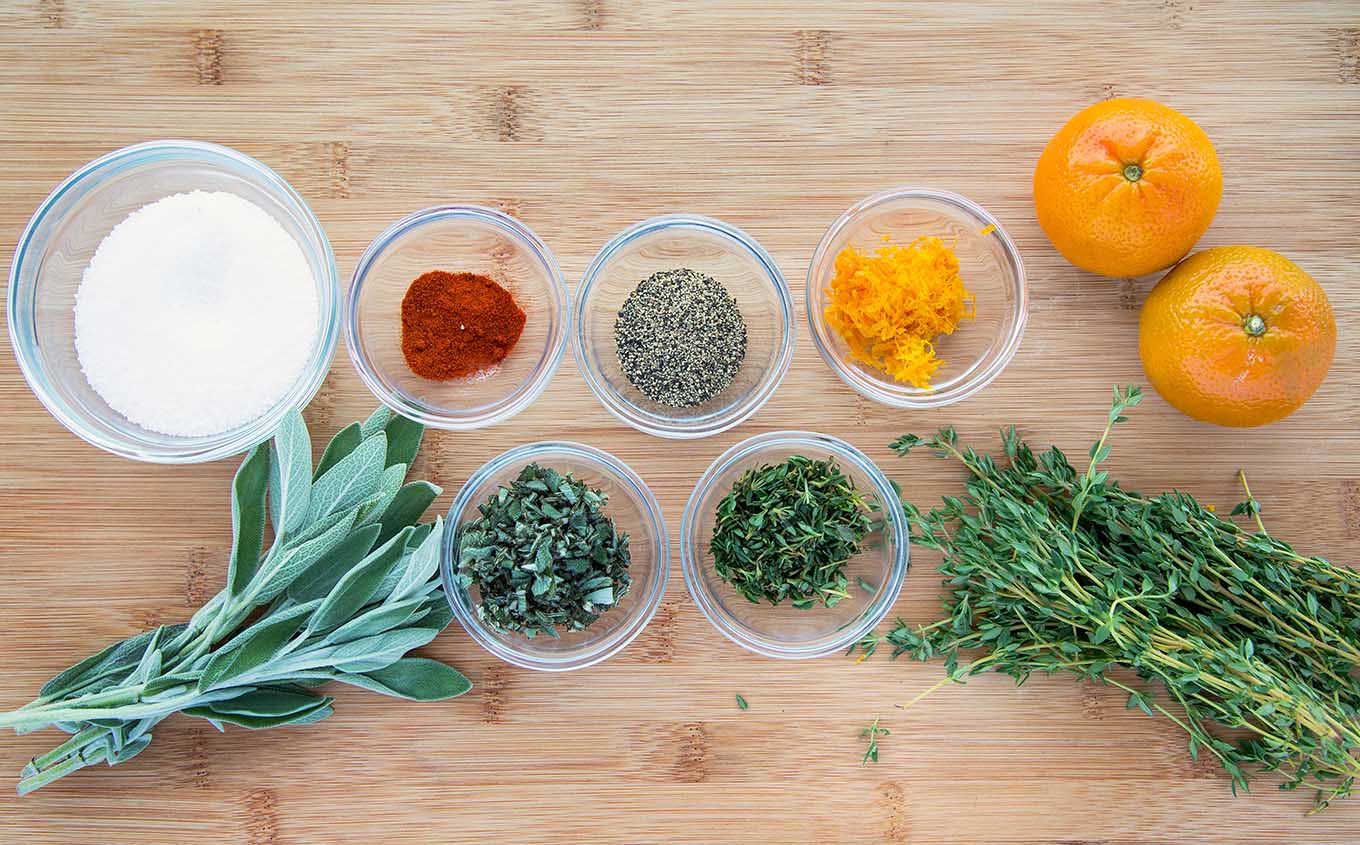
Let’s start by gathering the ingredients we need to dry brine our turkey. In Chef Speak, this is called the Mise en Place, which translates into Everything in its Place.
Not only does setting your ingredients up ahead of time speed the cooking process, but it also helps ensure you have everything you need to make the dish.
- Kosher Salt
- Black Pepper
- Smoked paprika
- Citrus zest
- Fresh thyme
- Fresh Sage
Do I have to use specific herbs and spices to dry brine a turkey?
That’s a tricky question because if you want a traditional Thanksgiving turkey, the answer is yes.
But If you like specific flavorings and aren’t into traditional Thanksgiving flavors, then by all means, have fun substituting spices that you like.
Recipes should be used as guidelines, and in all honesty, the salt is the only ingredient you really need for dry brining; the rest are added for flavor.
Why Should I dry-brine my turkey?
When you’re dealing with a large piece of meat like a whole turkey, it’s easy to overcook it into a dry, flavorless disaster. Dry Brining gives the dry brine mixture time to penetrate into the meat.
Dry brining (dry rub) is a way to inject both flavor and moisture into a turkey, giving you a flavorful, moist, roasted turkey.
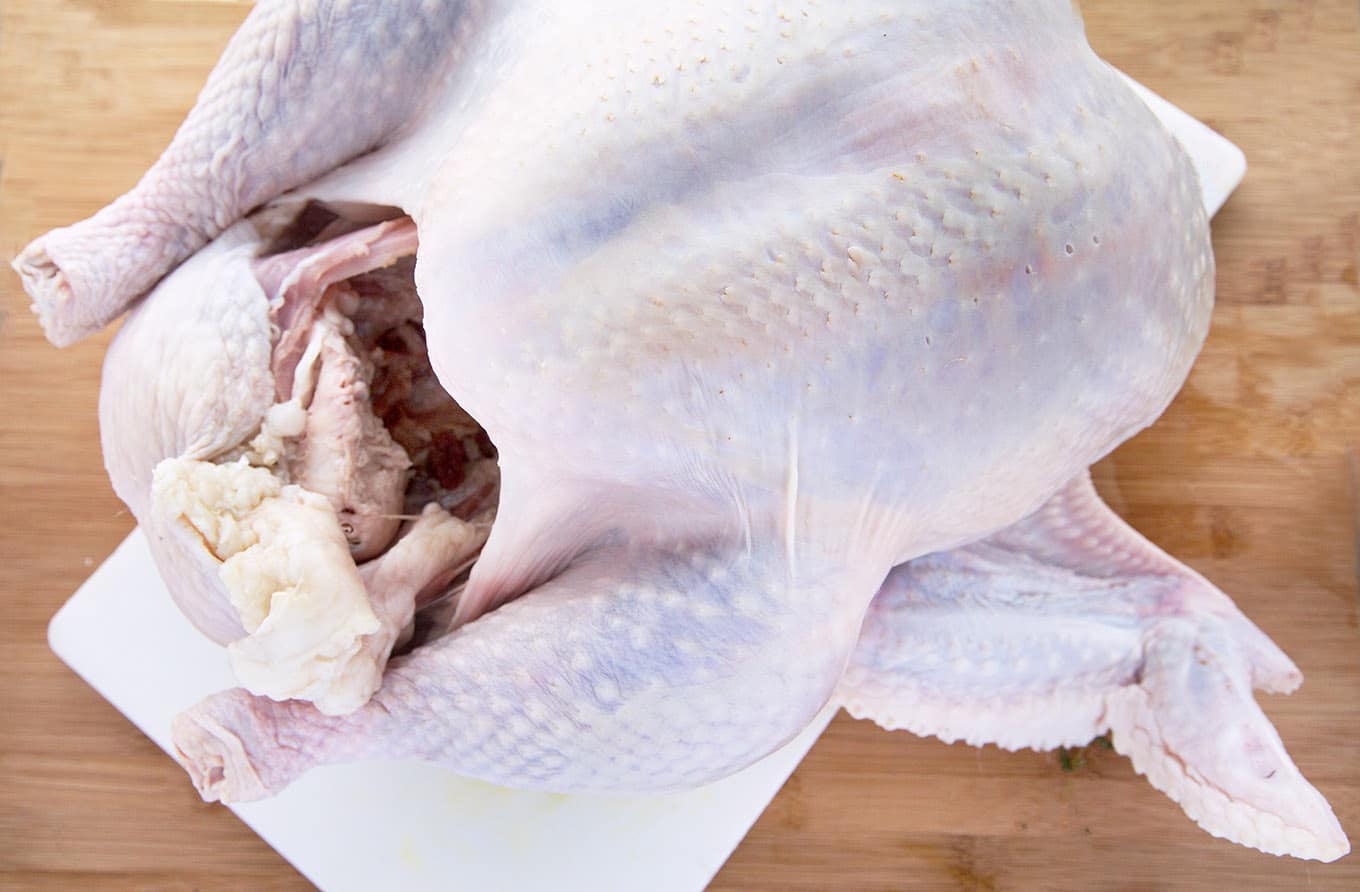
Rule #1 of Dry Brining
The larger the piece of meat, the more time is needed for the brine to be effective.
A dry brine, also called pre-salting, involves rubbing the salt, seasonings, and/or sugar directly onto the meat and skin and then letting the meat rest in the refrigerator for a period of time before cooking. During the process of dry brining, the salt draws out the juices through osmosis.
As the salt dissolves into the juices, it begins turning into a natural brine without any added liquid. This Natural brine is then reabsorbed into the meat and starts breaking down the tough muscle proteins. That is why this process needs up to 3 days to complete.
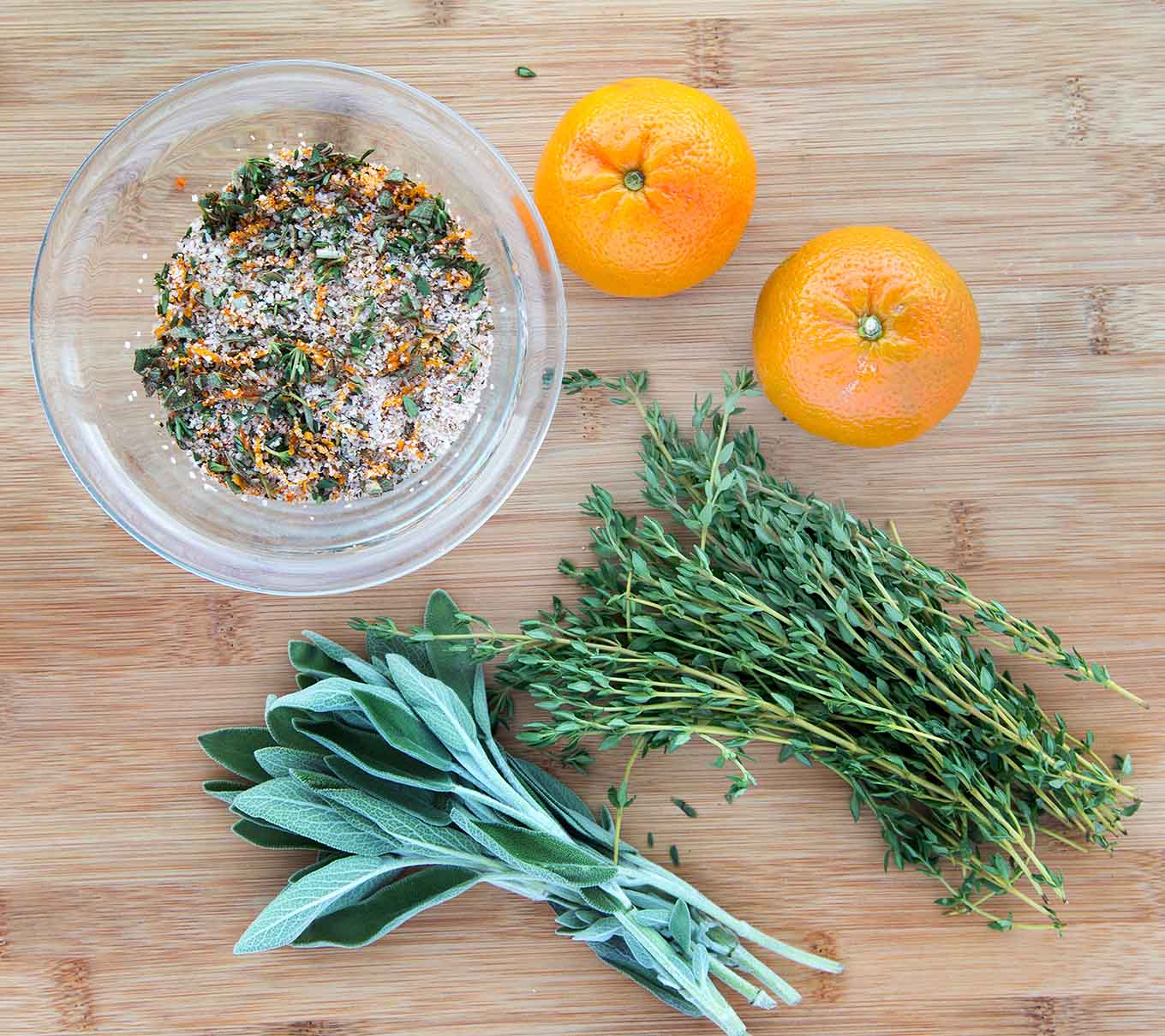
How to thaw a frozen turkey
The best way to thaw your turkey in the refrigerator in its original packaging. General defrosting times are 24 hours for every 4 pounds of Turkey.
If you have no choice and must thaw your turkey quickly, fill the kitchen sink with cold water and put the turkey in it, breast side down.
Make sure to completely submerge the turkey in water (in its original packaging) for the quick thaw method. Make sure to change the water every 30 minutes. This defrosting method will take 30 to 40 minutes per pound of turkey.
*When finished thawing the turkey, make sure to clean and disinfect the sink, spigots, and all surrounding surfaces.
*Don’t leave the turkey out to thaw on the countertop.
Chef Tips
- Don’t buy a preseasoned or kosher turkey (pre-salted) or self-basting turkeys. I always look for free-roaming or a heritage bird. But most importantly, no added salt.
- Make sure your turkey is thawed if you buy a frozen turkey. *Buy your turkey early enough so that it’s thawed and ready to brine on the Monday before Thanksgiving.
- It doesn’t have to be a whole turkey; you can dry brine a turkey breast.
- Getting under the skin of the turkey and applying the brine directly to the meat will make a tastier, moister turkey. If you’re only going to brine the skin, try and brine it for the full 72 hours.
- Don’t rush dry brining. To enjoy the best turkey you’ll ever have, you need to give it enough time to be effective. 2 days is the minimum, and can go as long as four days if you’re working with a 20-pound plus bird. *Any length of time you can brine the turkey is better than not brining the bird.
- You can use any herbs that you like, but the salt really does matter. Use Morton’s Kosher Salt for the best results. Diamond Kosher salt is a larger grain; if you use Diamond, increase the amount of salt by half. Don’t use table salt, it’s too fine and will make the turkey too salty.
- If you don’t have Kosher Salt, you can use Coarse Sea Salt or Coarse Himalayan Pink Salt because of the size of the coarse grains.
*The standard is one tablespoon of salt for every 5 pounds of turkey, but I like to go a little below that at one tablespoon of salt for every 6 lbs. So if you’re turkey is smaller, adjust the amount of salt and herbs.
Does it Matter Where I Apply the Mixture?
It does make a difference where you apply the dry brine. Separating the skin from the meat so that some of the dry brine can be rubbed directly on top of the meat (below the skin) will give you the best results.
If you apply the brine directly on the skin, it will need more time to penetrate the skin and get to the meat. The breast will also get more of the dry brine than the rest of the turkey. The turkey breast has the largest amount of meat on a conventional turkey.
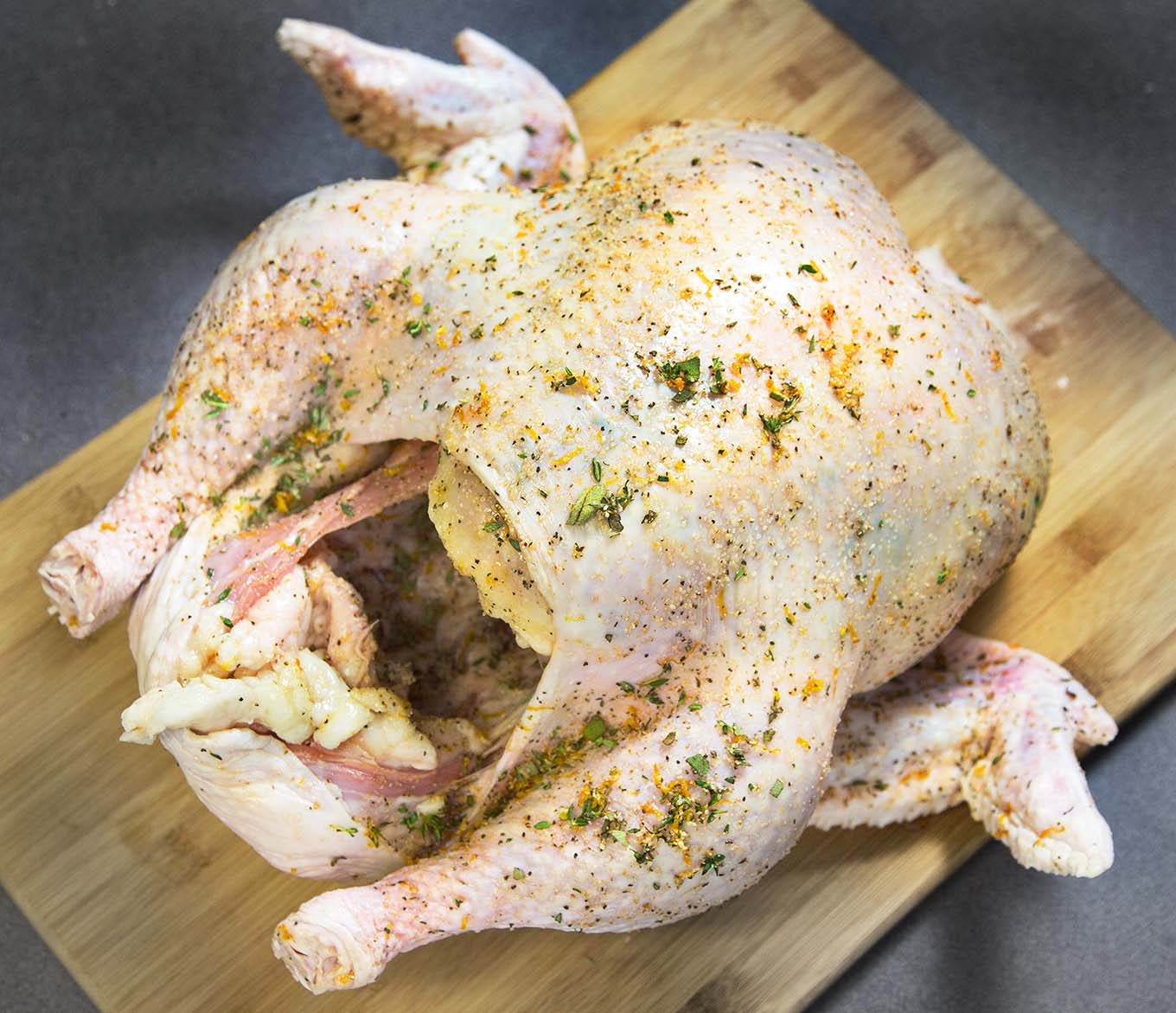
- After applying the dry brine, place the turkey breast side up in a roasting pan. Cover the turkey securely using plastic wrap. Or place it into a small plastic bag and seal it, removing as much of the air as possible. Refrigerate for 48 – 60 hours.
- Remove the plastic wrap and keep it refrigerated uncovered for the last 12 hours of brining. This will help crisp the turkey skin.
Can I use Dry Herbs?
Yes, you can, although I prefer fresh herbs. You can find them at most grocery stores in convenient little plastic containers. If fresh herbs are not available, by all means, use dry herbs. You can also add any other herbs or aromatics that you like.
Should I cook a Heritage Turkey Differently?
A heritage turkey is more elongated with drumsticks that are a good 1 to 2 inches longer than a modern bird, extending well beyond the tip of the breast.
Because of its more elongated shape, a heritage turkey cooks a little more quickly than a conventional turkey, so the biggest danger is overcooking. To make sure your Heritage Turkey is not overcooked, follow my recipe and change the cooking times.
Roast an unstuffed turkey at 425° for 20 minutes, then turn down the temperature to 325°F until the internal temperature of the thigh meat reaches 155°F.
Cooking 15-20 minutes per pound for the total cooking time. That being said, I would start checking the internal temperature 2 hours after the second phase of the process using an Insta-read thermometer in the thigh.
Also, make sure to allow 1-½ lb. per person compared to about one lb. for a conventional turkey. As an example, expect a 12-lb. heritage turkey to feed about eight people. Also, keep in mind that you’ll have as much dark meat as light meat. A conventional turkey will have more white meat.
Chef Tips for Roasting
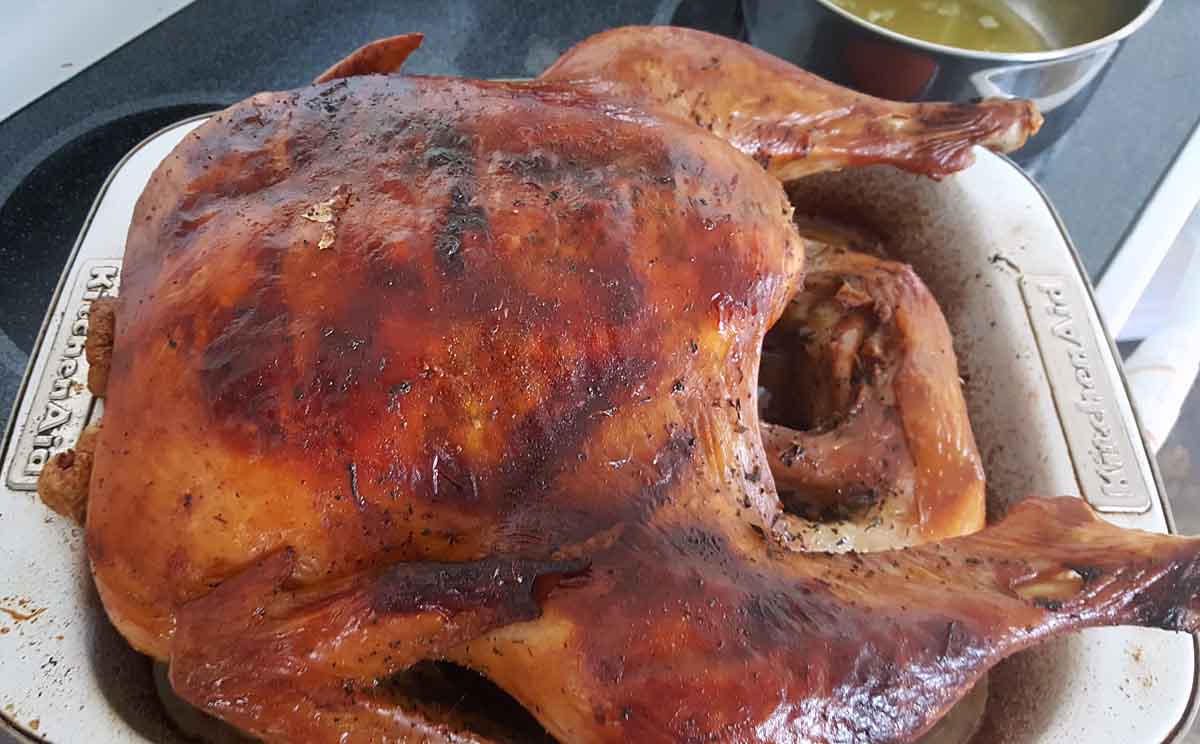
- Set your oven rack in the bottom third of the oven.
- Let the turkey sit out of refrigeration for about 30 minutes so it can come to room temperature before roasting.
- Allow the turkey to sit at room temperature for one hour before roasting. **Do Not Rinse The Brine Off Turkey
- Start off roasting the turkey at 425°F, and roast upside down for the first 45 minutes. At the end of that time, very carefully turn the turkey over with the breast side up to continue cooking.
- You’ll find that some ovens have cold spots. This is why it’s a good idea to rotate the turkey halfway through and baste for even cooking and browning. Keep some turkey or chicken stock handy in case your turkey doesn’t produce enough juice during the roasting process, and use that for basting if necessary.
- Always use an instant-read thermometer to ensure that your turkey has been cooked properly. Insert the thermometer into the thickest part of a thigh without touching the bone registers. Your turkey will be done when the thermometer reaches 165°F. It will continue to cook once you remove it from the oven, increasing by another 10 degrees.
- Let the turkey rest for 20-30 minutes before carving.
I absolutely love my Meater Plus | Smart Meat Thermometer. It takes all the guesswork out of cooking meats in the oven, on the grill, or in a smoker.
Do I have to start the turkey upside down?
No, you don’t. Safety should always come first and if you don’t think you can flip the turkey safely, skip that step. Still use the instruction for roasting starting at 425 degrees, then lowering to 325 degrees.
**If you do flip the turkey, take the pan out of the oven first. Don’t attempt this while the pan is in the oven.
You might also find heat-resistant gloves a good option. They’ll come in handy throughout the year.
Can I still Dry-Brine a Self-Basting or Kosher Turkey?
No, you can’t. That will make the turkey too salty! What you can do, is leave the salt out of the dry-brine ingredients and use the remainder of the seasonings as a dry rub. Feel free to add in your favorite spices.
Apply the dry rub for 24-36 hours and follow the roasting instructions.
My Turkey has been injected with a saline solution can I still use a dry brine?
While it’s not a good idea to add more salt to an injected turkey, you can still use the dry brine method. If your turkey is in the 15-pound range cut the Kosher Salt down to 1 Tablespoon. If your turkey is under 15 pounds reduce the salt accordingly. You can use the rest of the ingredients as stated in the recipe.
Why shouldn’t I stuff my turkey?
I know that the stuffing from inside the turkey is the best you’ll ever have. But it’s not a practice I recommend for two very important reasons.
The stuffing sucks a lot of the moisture (and flavor) out of the turkey. That’s why a stuffed turkey is often dry and overcooked. And the really bad news is, it puts us at risk for foodborne illness.
The longer it takes the turkey to reach an internal temperature of 165 degrees gives bacteria more time to multiply. And that means that uncle Sal (salmonella) might be paying you and your guests an unexpected holiday visit, which will definitely put a damper on the festivities.
**Stuffed turkeys also take longer to cook.
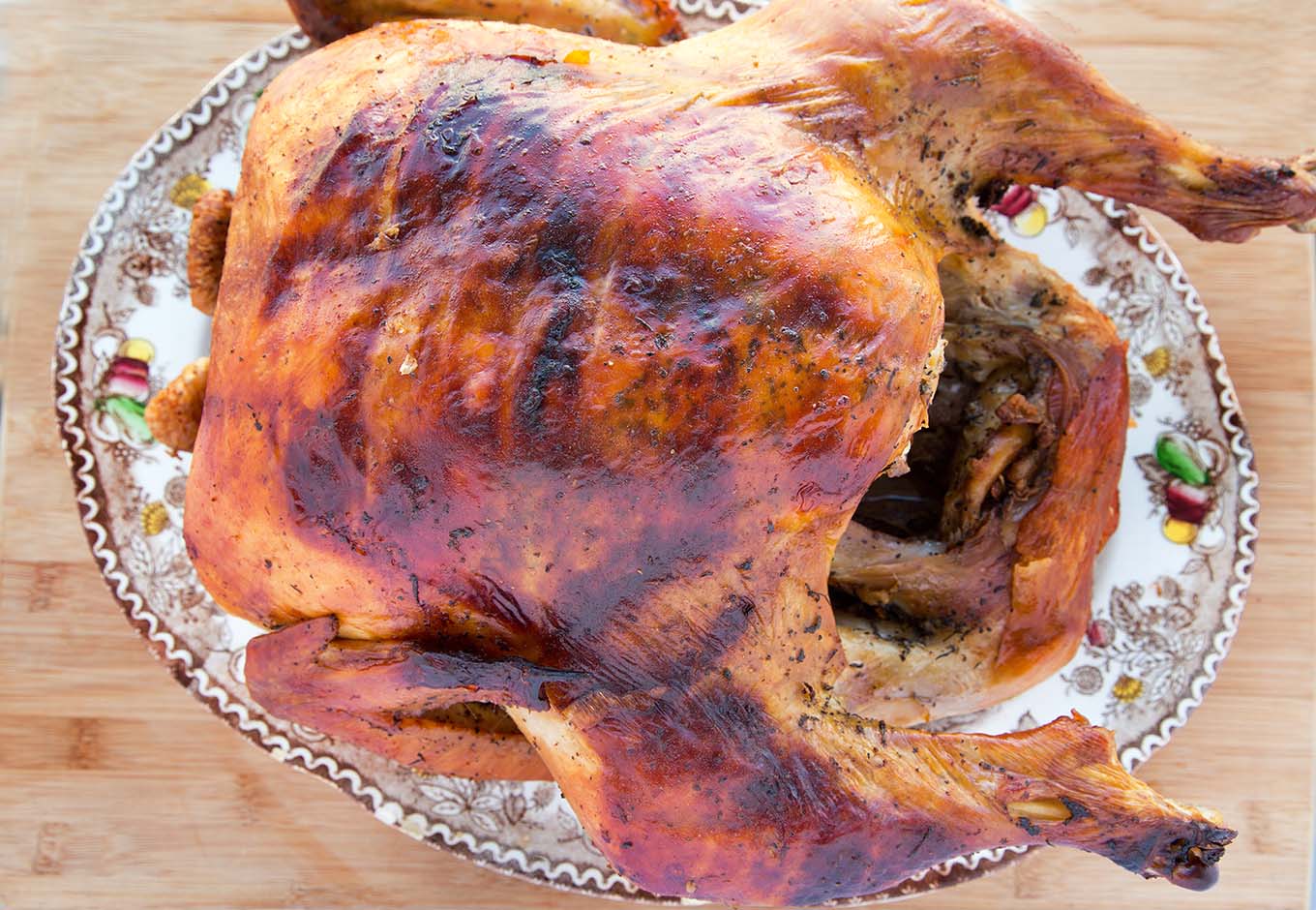
If you have leftover turkey, try my Old Fashioned Turkey Croquettes.
If you’re looking for a new Chef Knife, check out Misen. I’ve been using their kitchen knives for years!
Recipe FAQs
Dry-brining, also referred to as salting, is the process of rubbing the meat down with salt. The natural moisture content of the meat creates a concentrated brine that is naturally absorbed back into the meat before cooking.
A whole turkey needs two to three days of brining time. The dry-brining can be done days before Thanksgiving, giving you extra time on Turkey Day.
For the last 24 hours of the dry brine, leave the turkey uncovered in the refrigerator. This will dry out the skin, which in turn gives you incredibly crispy, golden-brown skin on the finished turkey.
Recipes to serve with turkey!
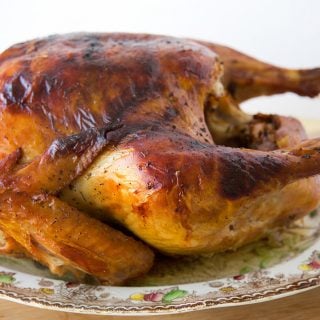
How to Dry Brine a Turkey
Ingredients
Dry Brine Ingredients
- 3 tablespoon coarse kosher salt I use Morton's Kosher Salt (coarse grain sea salt may be used)
- 1 tablespoon coarse grind black pepper
- 1 tablespoon thyme finely chopped fresh or dry
- 1 tablespoon sage finely chopped fresh or dry
- 1 tablespoon clementine peel finely zested any citrus may be used
- 1 teaspoon smoked paprika optional
Roasting Turkey
- 1-2 carrots rough cut
- 1 onion rough cut
- 3-4 stalks celery rough cut
- 2 cloves garlic peeled
- 16-20 lb turkey fresh or frozen
- rough cut onion, carrot, sage, thyme and orange skin for inside the turkey (optional)
Instructions
Prep and Dry Brining
- Mix the dry brine ingredients together in a small bowl and set aside
- Remove the turkey from the wrapping and remove the giblets and neck from inside the cavity and save for another use. Remove or discard any plastic or metal cages or pop-up thermometers.
- If you can follow safe procedures, rinse the entire turkey in cold water thoroughly. Then pat the turkey dry using paper towels, inside and out. The FDA Does Not Recommend Rinsing Turkeys. If you do rinse your turkey make sure to clean and sanitize the counters, sink, faucet and any areas possibly exposed.
- Using your hands, gently loosen the skin over the breast and separate it from the meat, making sure to break through the thin membrane between the skin and breast while leaving the skin itself intact.
- Sprinkle 2 teaspoons of the salt mixture into the cavity of the turkey and rub it into the cavity.
- Rub 4 teaspoons of the salt mixture into the meat of the breasts (under the skin). Then sprinkle the remaining salt mixture over all the skin of both the breasts, legs and wings
- Place the turkey breast-side up in a roasting pan. Cover the turkey securely using plastic wrap, or place it into a small plastic bag and seal it, removing as much of the air as possible. Refrigerate for 48 – 60 hours.
- After the time has expired, uncover the turkey and allow it to remain uncovered and refrigerated for 8-12 hours.
The Secret to Roasting
- Allow the turkey to sit at room temperature for one hour before roasting.**Do Not Rinse The Brine Off the Turkey
- Preheat the oven to 425º.
- In the bottom of your roasting pan add roughly cut celery, onions, garlic, and carrots. Include the skin from the onion and carrots. Add 1 cup of chicken broth or water to the pan.**You can also place some aromatics inside the cavity of the turkey before cooking. Onions, carrots, herbs of your choice, orange peel and any other spices you like.
- Place the turkey upside down on a rack in a roasting pan. This will allow the turkey to self baste the breast as the fat from the underside and dark meat flow into the breast.**If you don't feel comfortable turning the hot turkey, cook your turkey right side up for the entire process. The breast meat won't be quite as moist, but it's not a deal-breaker. Safety First!
- Brush the turkey with melted butter and roast upside down for the first 45 minutes. At the end of that time very carefully turn the turkey over with the breast side up to continue cooking. ( I used heat resistant gloves) Brush again with melted butter if you like.Decrease oven temperature to 325º. Cook the turkey until it reaches the temp of 165º for the breast and 175º for the thighs. The meat will rise an additional 10º continuing to cook as it rests.*My 20-pound turkey only took an additional 3 hours to cook using this method. Make sure to check your turkey around the 2 ½ hour mark.
- Allow the turkey to rest 30 minutes before slicing. This will ensure that the juices stay in the turkey and don't all run out as you slice it.
Video
Notes
Dry Brining Turkey Tips
- Don’t buy a preseasoned or kosher turkey (pre-salted) or self-basting turkeys. I always look for free-roaming or a heritage bird. But most importantly no added salt.
- Make sure your turkey is thawed if you buy a frozen turkey. Buy your turkey early enough so that it’s thawed and ready to brine on the Monday before Thanksgiving.
- It doesn’t have to be a whole turkey, you can dry brine a turkey breast.
- Getting under the skin of the turkey and applying the brine directly to the meat will make a tastier, moister turkey. If you’re only going to brine the skin, add an extra day to the process.
- Don’t rush dry brining. To enjoy the best turkey you’ll ever have, you need to give it enough time to be effective. 3 Days really is the minimum, 4 is even better especially if you’re working with a 20 pound plus bird.
- You can use any herbs that you like, but the salt really does matter. Use Kosher Salt for the best results. Salt that is too fine will make the bird too salty. Kosher salt, say it out loud, twice.
- The standard is 1 tablespoon of salt for every 5 pounds of turkey, but I like to go a little below that at 1 tablespoon of salt for every 6 lbs. So if you’re turkey is smaller adjust the amount of salt and herbs.
- Add more water to roasting pan if necessary to prevent pan drippings from burning.
- If you absolutely don’t have Kosher Salt and have to use Regular Salt decrease the amount of the salt by ⅓.

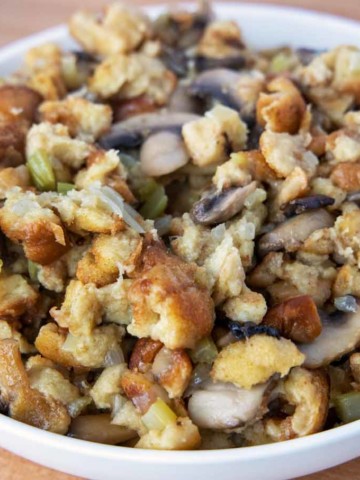
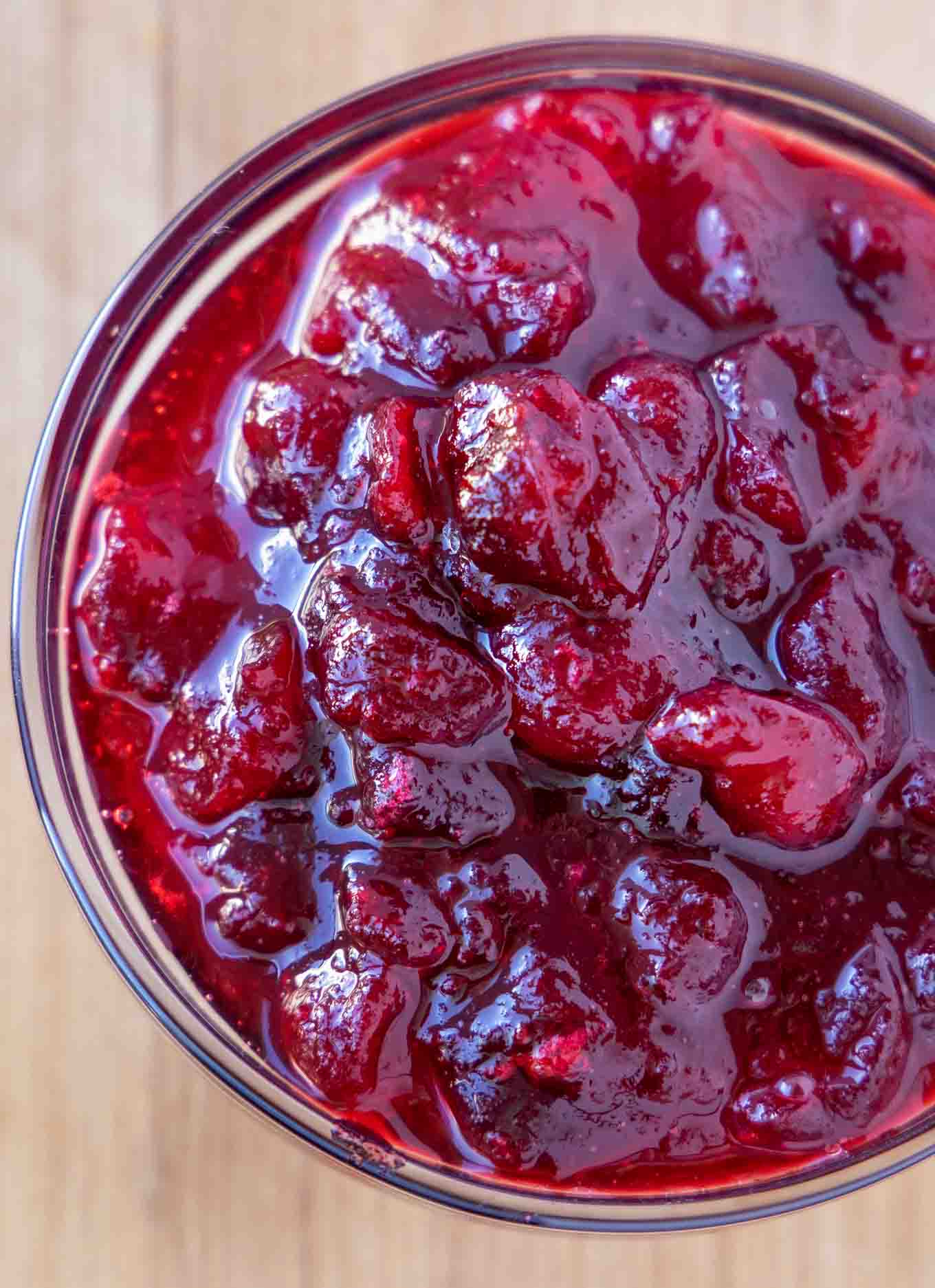
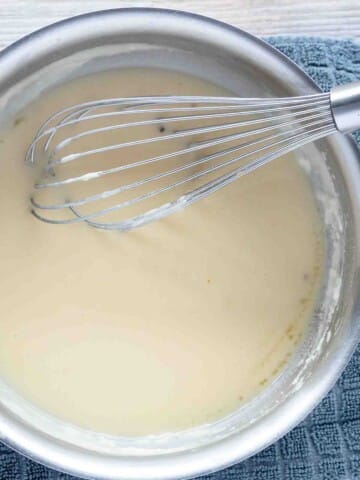
C. Adams says
I love this recipe. I use it every year, twice a year — Thanksgiving and Christmas. Perfect flavorful turkey!
Dave says
Does the turkey require covering during the roasting process? I don’t see any reference to it being covered. I have always covered my turkey with tin foil dur8ng cooking process.
Chef Dennis Littley says
No it does not need to be covered, unless it starts to get too brown.
Brent Kleinheksel says
This was my 2nd year using this recipe, once again it turned out fantastic. In the video the separating of the skin from the meat to insert the brine seems way easier than what I’ve encountered? However I buy a heritage black turkey from Joyce Farms, maybe those birds have tighter skin? I also learned this year that a convection oven seems to decrease the cooking time a little versus a non-convection oven.
Chef Dennis Littley says
Thanks for letting me know you enjoyed your turkey. Heritage turkey may have a tighter skin. The brand I bought this year had a little play in it but not as much as last years. Yes cooking with convection will reduce the cooking time, which is why its important to use a meat thermometer so it doesn’t ovecook.
Charlie Buss says
I’m a huge fan of turkey and this way of making them is just the best!!!! I push everyone I meet to dry brine and give this webpage as the definitive source—IF they have had some of my brined turkey, they don’t have to be coaxed to think it is worthwhile. I’m old and have made lots of birds over the years but now they just keep getting better&better! Thanks so much, I can’t praise this method enough (and I don’t know how you can beat the price of turkey AND make it so delicious so I currently have 3 in the freezer!!!) Oh, and my own advice, yes we all love stuffing that was inside the turkey but if you make your stuffing in a casserole dish, rub it down with chicken fat and drizzle a couple tablespoons of fat over your stuffing, it’ll taste just as yummy as the “traditional” stuffing….and you can make it the day before (or whenever) and save yourself the hassle on “turkey day”!
Chef Dennis Littley says
Thanks for the great comment and review Charlie. I’m happy to hear you enjoyed the brined turkey, I’ve been making it that way for a long time and its almost foolproof. Thanks for the tips on the stuffing too.
Lona says
Chef Dennis, Thank you for answering my emails. Our 24lb. Turkey turned out Absolutely Wonderful. My 76 year old sister said this is the Best Turkey I Have Ever Had. She cooked for 33 years. And she’s had plenty of turkeys. From her this meant a lot. Thank you so much Chef.
I sure hope people will give your Dry Rub Prime Rib a try at Christmas. We’ve used it the last 2 years and it’s So Fabulous. I’m so excited for my son and sister try this. She thinks she loved the turkey. Wait till she gets that first bite of prime in her mouth. Thanks so very much again Chef. Lona
Chef Dennis Littley says
You’re very welcome and thanks for letting me know the turkey turned out well. That’s high praise indeed from your sister! I’m always here if you have any other questions.
Charlotte Valitzski says
Moist and tender turkey! Thanks Chef.
Chef Dennis Littley says
You’re welcome! I’m glad you enjoyed your turkey!
Kirk says
This dry brine recipe was my first attempt at cooking a turkey Thanksgiving dinner. I was so proud of how it turned out, and so were my guest!! Usually I would not try a new recipe for a holiday dinner, but, BOY im so glad i did!! Thanks Chef Dennis!!
5 stars!!!
Chef Dennis Littley says
You are very welcome and thanks for letting me know the dry brined turkey turned out well. I’ve been using that recipe at home for a very long time and it never fails to impress.
John says
Do you cover the turkey?
Chef Dennis Littley says
Only if you think its getting too dark, otherwise there is no need to cover it.
Mary says
Is this brine okay to use if I’m frying a turkey?
Chef Dennis Littley says
Yes you can. The dry brine will help keep the moisture in the turkey and get the skin extra crispy.
Jon says
Hi Chef Dennis,
I used this recipe last year and the turkey turned out fantastic. This year I’m doing a small 2
3-4 pound breast instead of a full turkey. Is the brining time any different or is it still 3-4 days? Thank you.
Chef Dennis Littley says
I’m glad you enjoyed your brined turkey last year! As for brining time, 2 days is enough for just the breast.
Enza Levy says
Should salted or unsalted butter be used to brush on turkey? Thank you!
Chef Dennis Littley says
Unsalted butter is always my choice for cooking.
Francesco says
Thank You for your recipe, been using it for five years. Have you made the salt mixture the night before? Would the brine’s effectiveness be hindered or should I make it the day I apply?
Chef Dennis Littley says
I’m happy to hear you’ve been using my dry brine method. You can make the salt mixture the day before, it won’t hurt it.